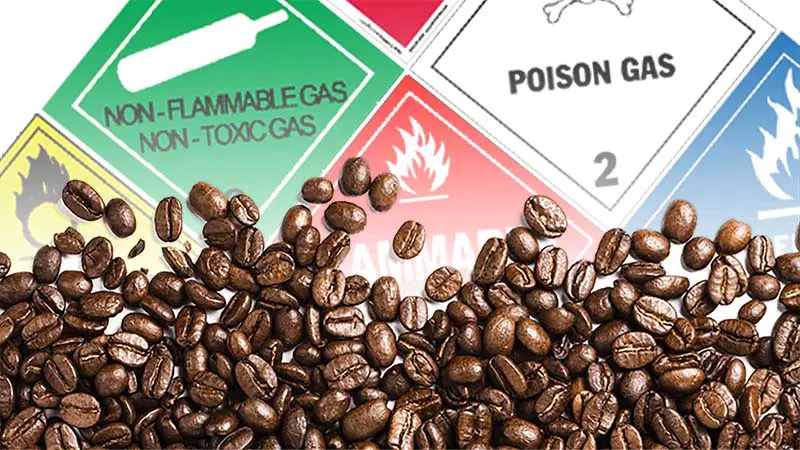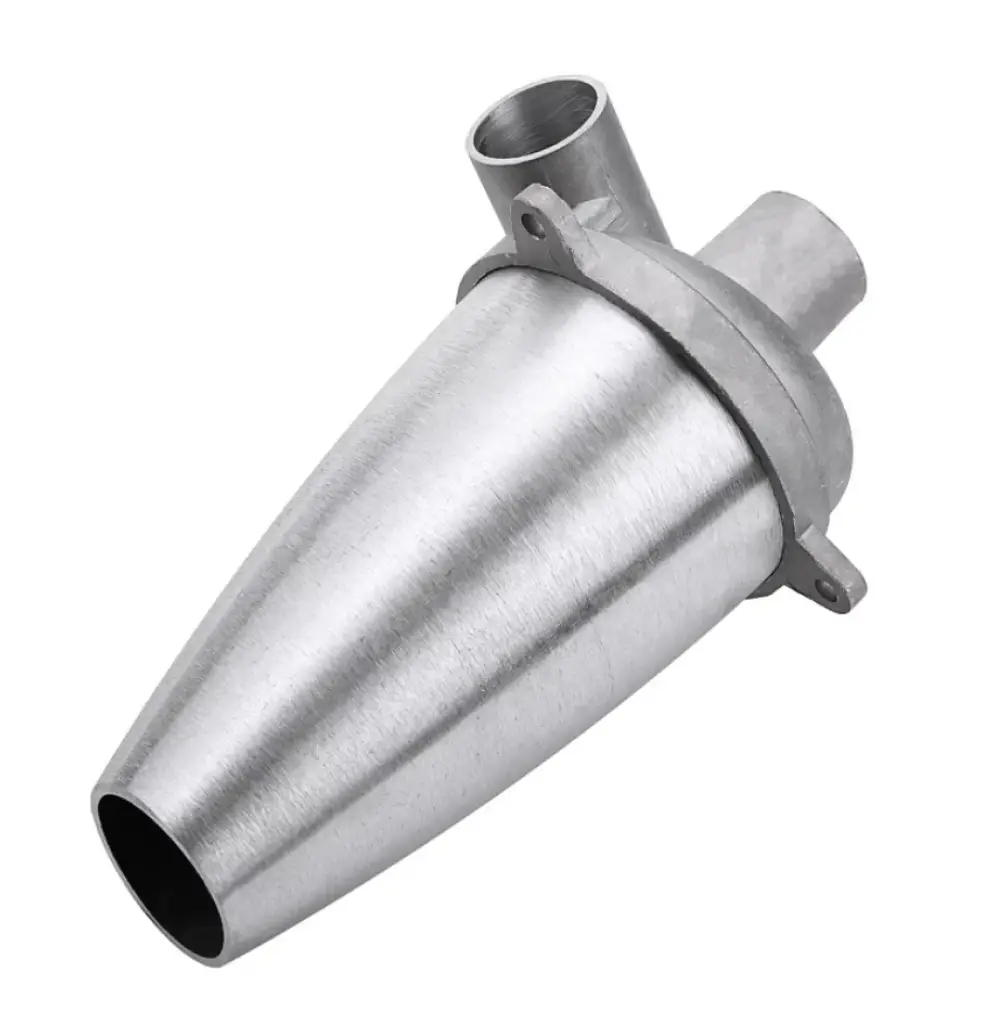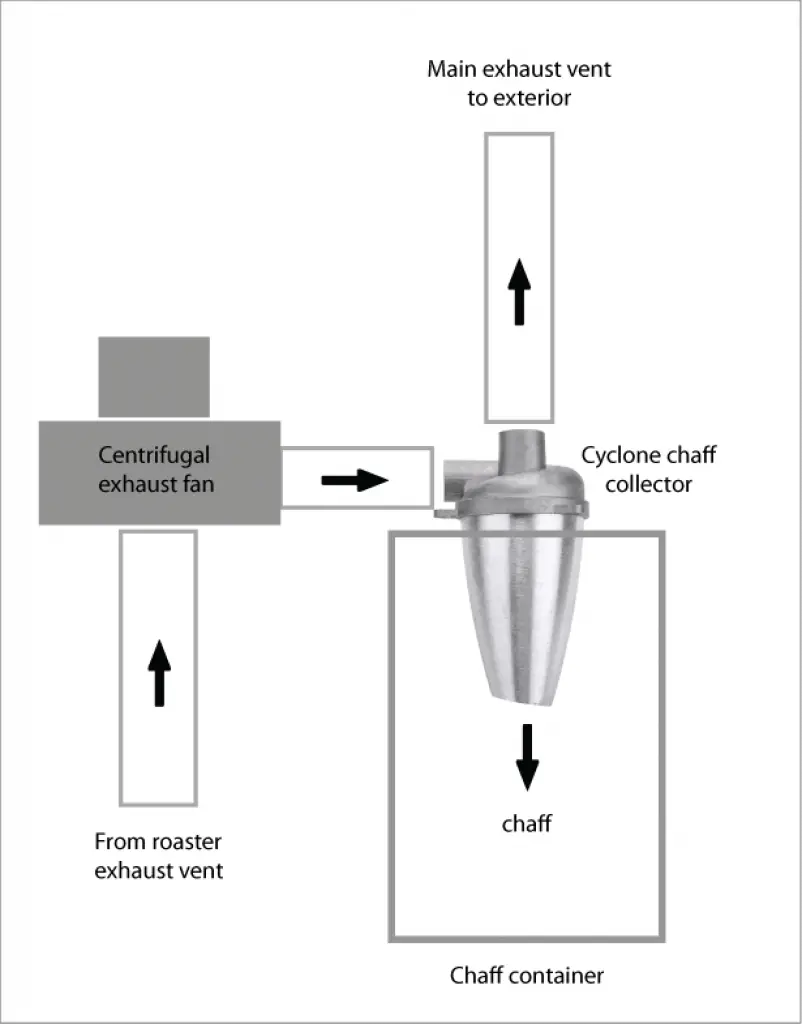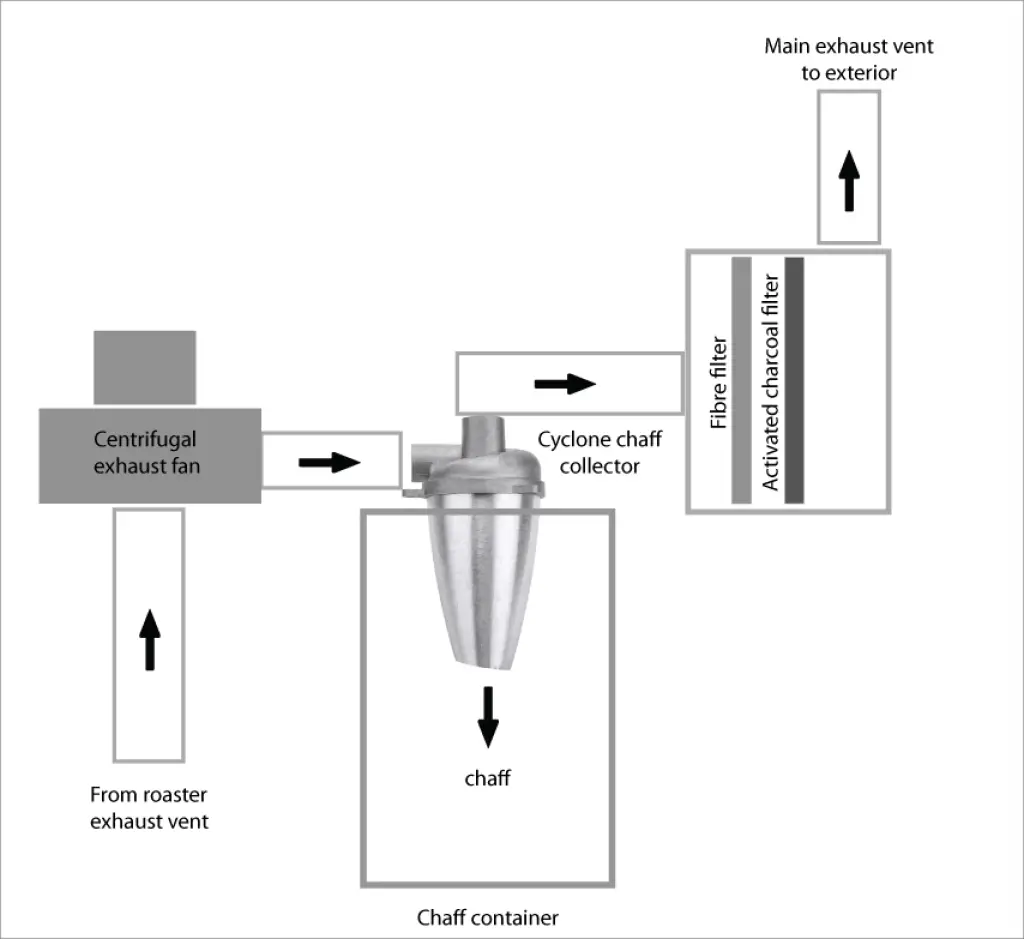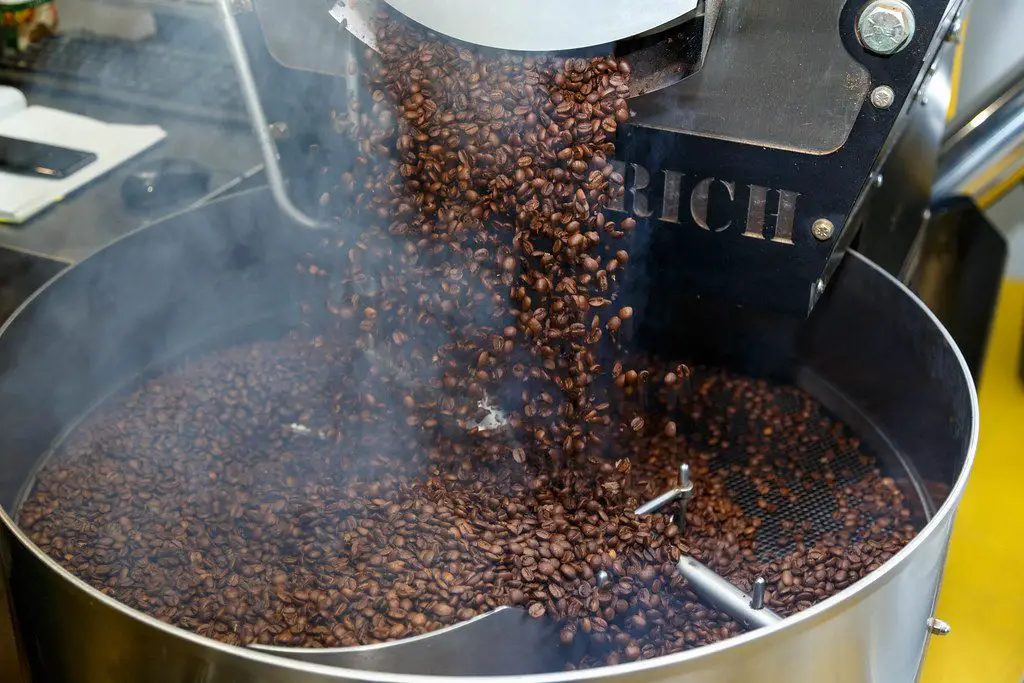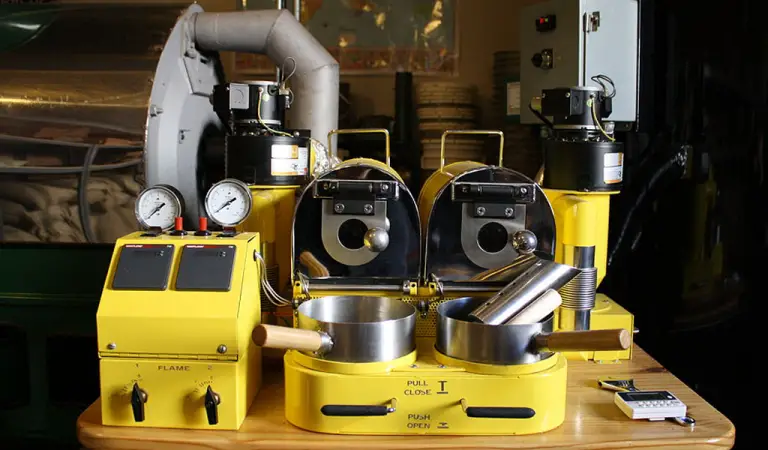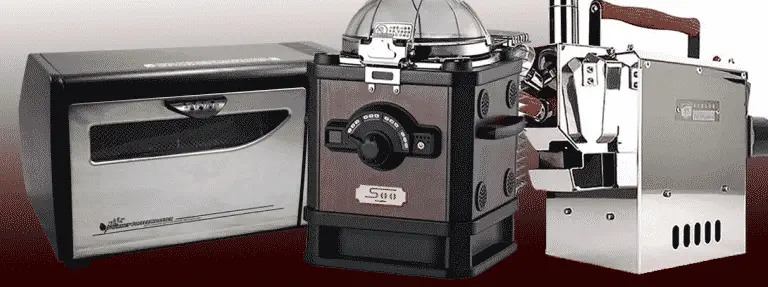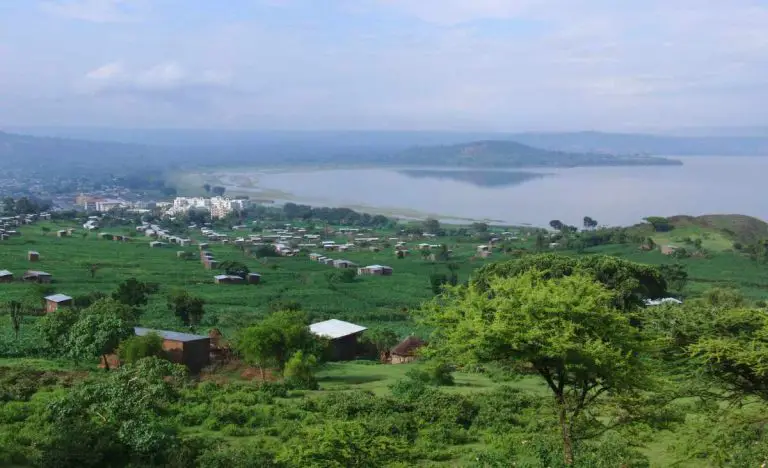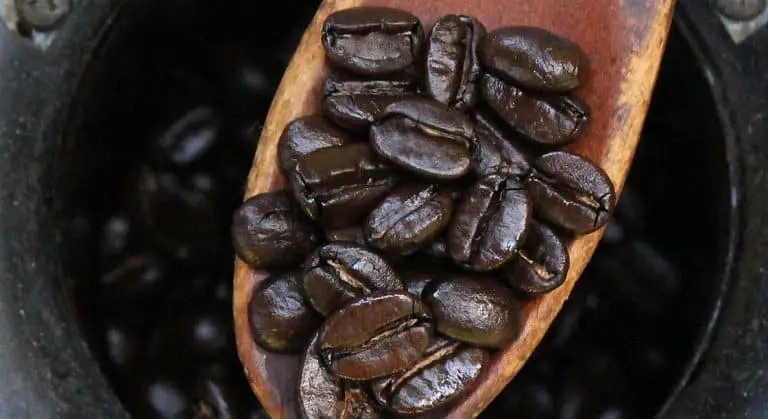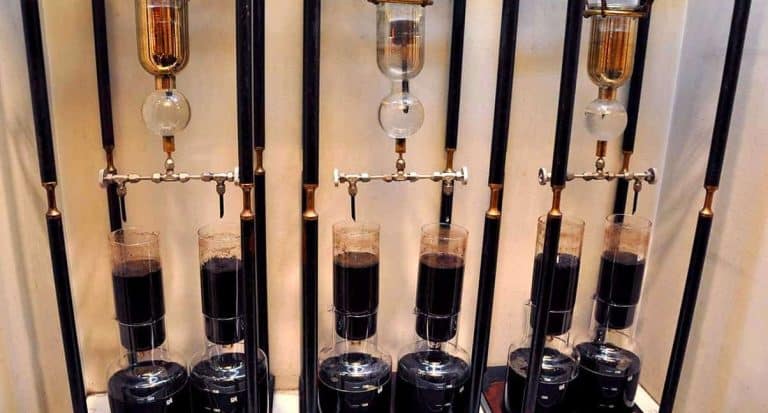Is it hazardous to roast coffee at home?
The first thought that sprang into my mind was, Is it safe, and will I get complaints? I realized that I’d need to find out before firing it all up. That’s just the way I am. Most information I found about the hazards of coffee roasting reads like it’s written by PhDs. It’s long, overly detailed, technical and very boring.
While this might be useful information for commercial roasters, it’s hardly useful for the typical home roaster. I realized that I needed something much shorter, more accessible and to the point. Would I be filling my home up with thick dangerous smoke? Or, would there be the dreaded knock at the door by the bylaw enforcement officer, citation in hand? Thankfully it didn’t turn out like that and in the end, it was much simpler than I thought.
So, is coffee roasting it safe?
Roasting coffee at home is quite safe if you follow a few simple precautions and apply common sense. The main issues are smoke and fumes which can be minimized by using ventilation, filters, and afterburners. Directing fumes and smoke away from neighboring properties will help you avoid complaints. Staying vigilant and regularly cleaning accumulated tar and chaff from your roaster will minimize the risk of a roaster fire.

The four things to consider when starting to roast coffee at home
After sifting through a bunch of the research I managed to reduce it all to the following four questions. None of these deal with the quality of the roast but only address regulation and hazards.
This seemed much simpler to address than the mound of research I had to sift through.
Is it legal to roast coffee at home?
Depending on where you live the regulations surrounding coffee roasting and their enforcement will vary greatly. They do however usually address the same basic issues of pollution, business registration and fire safety. You’ll find that regulations are addressing this at city, state and federal levels but when it comes to home roasters most of the regulations that could affect you are at the city level.
It’s only larger commercial roasters in my experience that get involved with state and federal regulations. The usual mantra for home roasters is that it’s sometimes better to beg forgiveness than ask permission. A pound or two of good coffee given to your neighbors regularly can go a long way in securing goodwill and keeping dialogue open.
That being said, unless you are selling online and maintain a small commercial footprint – no large trucks and deliveries and throngs of customers you can usually fly under the zoning guidelines if selling small quantities from home. If your enterprise starts to get noticed by your neighbors because of commercial traffic it will more than likely be noticed by the city. Many states have cottage food industry laws that make allowance for small roasters to produce and roast from home.
You’ll then need to start looking for some sort of offsite commercial space which opens a whole different can of worms. Building, pollution control, consultants, and power requirements then become much more stringent and expensive. All that is obviously beyond the scope of this article.
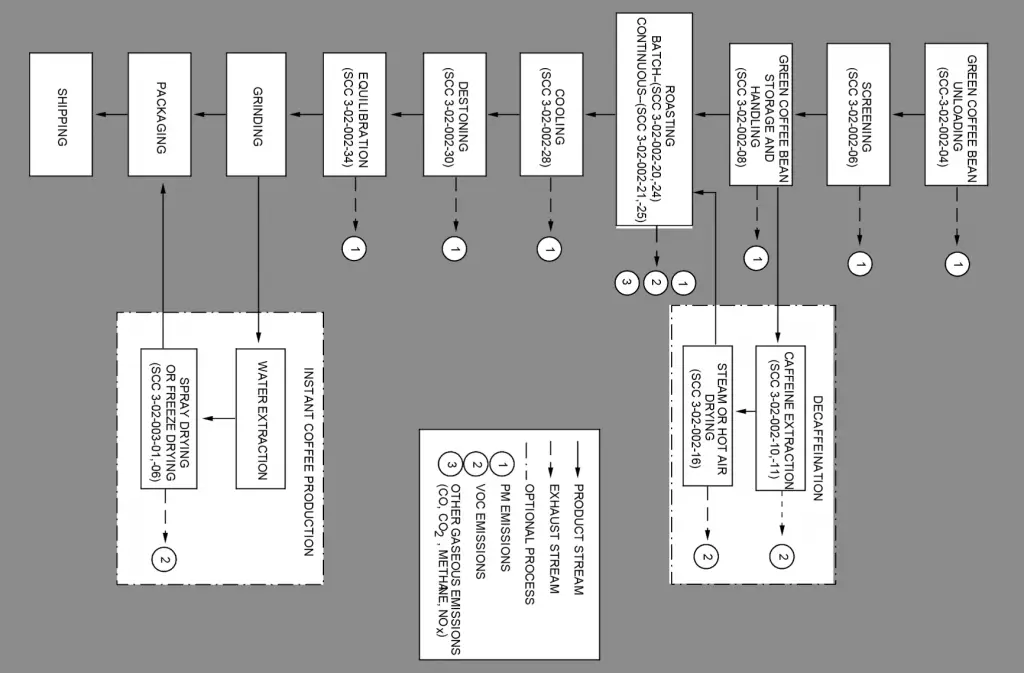
It might be prudent then to consider carefully at what point you exceed the roasting-at-home threshold. The EPA currently only requires expensive emission control equipment from “production-scale” coffee roasters – the language I assume excludes small, home and maybe even some cafe roasters. This is mostly enforced on the local level for small roasters. A useful note here is that agricultural properties in many jurisdictions would have less stringent zoning business regulations than urban properties.
Also if you’re selling directly to customers from home or online for that matter you would start to make sure you address the sale of food regulations concerning hygiene, packaging, labeling, etc.
Product Labeling
If you’re selling your product online or wholesale to a store or cafe, you’ll need to conform to US packaging requirements. In the US it is mandatory to provide the following on a coffee label:
- Statement of identity – the common name of the product
- Net Weight of contents – In metric and American units
- Producer’s name and address – can be anywhere on packaging
- List of ingredients
- A bar code
Other secondary information like use-by-dates, certifications, variety, roast type and origin are not mandatory but are usually provided for merchandising and marketing purposes.
Most home coffee roasters are roasting relatively small amounts for their consumption or family and friends and won’t have to worry about many of the regulations as long as you focus on minimizing the impact of your roasting on your immediate neighbors. If you think about it, coffee roasting as a potential nuisance doesn’t impact more on neighbors than a barbeque.
Are coffee roasting fumes hazardous?
The short answer to this is yes, but it depends on the amounts you’re exposed to. There are dangerous chemicals generated when roasting coffee and if you inhale large amounts of the fumes day in, day out they will damage your health. Most of the studies I read regarding exposure to fumes are aimed at commercial roasters, who are potentially inhaling fumes every day for hours on end. Here’s the science on the fumes.
Hazardous gasses and chemicals
Coffee roasting fumes contain harmful gasses and pollutants like nitrogen oxide, carbon monoxide, a plethora of other volatile organic compounds including carbon dioxide generated by combustion. In addition, there is dangerous particulate matter in the smoke.
According to the American Cancer Society, acrylamide, one of the most prevalent is Acrylamide. There’s a lot written about acrylamide which is a natural by-product generated of roasting beans. It is formed at temperatures approx. over 120C (248F).
Acrylamide is present in the smoke roasting coffee beans but the hot beans also off-gas it while they are being cooled. The EPA lists it as a “probable human carcinogen” suggesting they are not 100% certain, at least at the time of the study. My thinking is that if there’s a chance, avoid it. The problem is that it is so prevalent in our lives in other forms that it’s difficult to avoid. If you’re interested in a deep dive, here’s that article.
It’s contained in small quantities in french fries and potato chips; crackers, bread, and cookies plus many other baked and fried foods we consume every day. Studies show that consuming high quantities is dangerous for your health. Most expose animals to 1000-100,000 times more than we consume in our diets.
My position is that introducing very basic ventilation into the roast room reduces dangers from the fumes. I also believe that the health benefits of drinking coffee greatly outweigh the minimal risk of exposure to these chemicals.
Particles in the smoke
We also need to consider the particulate matter carried in the smoke. While it’s not as harmful as chemicals, it can also be unhealthy when inhaled in quantity. This includes the carbon particles in the smoke and the chaff which falls off the coffee bean during roasting. This is easily carried in the hot air exiting the roaster and is easily inhaled. It also makes a huge mess so it’s in your interest to control it anyway.
I’ll get more into smoke control a little later on, but suffice it to say that much of the harmful pollutants and particulate generated during roasting (and cooling) beans on a small scale can be easily negated by using rudimentary ventilation.
Also, the darker roast profiles will generate a lot more smoke, carbon and chaff than lighter roasts. This is partly because they roast longer at higher temperatures and the beans reach second-crack. The easiest way to reduce smoke output is to avoid producing it in the first place. I avoid the dark roast because I think it kills the natural flavors in good beans.
Commercial roasters are compelled by law to install expensive pollution control systems due to EPA legislation. Measures like smoke afterburners are very costly but are not prohibitive to large batch roasters.
The next thing to consider if you’re using gas is carbon monoxide produced by combustion. This builds up in closed spaces and you’ll need to pay attention to ventilation the roast space properly. On smaller roasters, this shouldn’t present much of a problem but on larger roasters in small spaces, ventilation is a must.
How can I reduce the fumes generated when roasting coffee at home?
It’s not cost-effective for us to try to eliminate the smoke and fumes so let’s look into the methods available to control the smoke we do generate.
There are two methods to venting a roaster, active which uses forced air and passive which uses natural room ventilation. Most small-batch roasters roasting indoors will simply close the door to the kitchen, garage, etc. and let a cross draught vent the room making sure it doesn’t waft directly into the neighbor’s living room window. Sometimes it’s as simple as that. A box fan set up at a window or door will help vent the room.
As I mentioned above that’s OK if you don’t mind vacuuming chaff. If you roast a few times a week, it can quickly become a pain. Also, most of us set up our roasters in a place and leave them there. In my experience, it’s best to set up a flue to vent the smoke and fumes directly outside.
If your roaster is next to a window you can simply use an aluminum dryer vent pipe directed outside. If you find doesn’t draw enough fumes out, you can use an electric in-line exhaust fan to pull the smoke out more efficiently. The advantage of this is you can also feed the smoke into a vertical vent stack to get it above the ridgeline which helps to disperse the smell. Dispersing smoke can go a long way in preventing complaints.

If you’re going to install a permanent vent, you might as well install a filter system to trap the chaff before it gets into the flue. Low-cost aluminum dust collectors can be easily adapted to work as effective chaff collectors similar to those used on commercial machines.
They’re originally designed to be used in small commercial vacuum systems and have only 1-inch inlets but they can be ganged. So for larger air flows, for larger roasters, 2 or more can be ganged using similar conical dust collectors in groups which ensures the higher air velocity needed for them to operate efficiently. Here are links for low-cost import versions available on Aliexpress if you are interested. Link 1, link 2. The filter would be installed before the extractor fan. See the diagram below for suggestions on how to use them.
Afterburners
A few consumer-grade roasters do have afterburners built-in, they’re also known in the industry as thermal oxidizers. The Behmor is a popular electrically powered option that’s been around a while. There’s an in-depth review I’ve written here if you’re interested.
Afterburners work by superheating the smoke and incinerating most of the particulate matter and vapors, turning it to ash. This is effective in reducing most of the smoke but uses a lot of electricity or gas and is generally not implemented effectively on consumer-grade roasters mainly because they are expensive to run.
Simpler ways to deal with the smoke
There are other much simpler ways to reduce smoke output for smaller home coffee roasters. One way that we discussed is to simply redirect and disperse it, but it doesn’t reduce the overall amount of smoke produced.
Another way is to use filters. This is done by constructing a box that holds a filter sandwich through which air and fumes are drawn using a high-temperature inline exhaust fan. The first needs to be a courser fiber air filter to trap large particles. Behind these are activated charcoal filters similar to those used in your kitchen range hood.
All these can be assembled in a simple box made from duct board and duct tape. AC flex duct or sheet metal ducts can connect this to the roaster and the flue after your chaff collector. This is effective in reducing some of the smoke but will add some air resistance into the vent system.
You should size the exhaust fan accordingly. The box and filters should be checked regularly to ensure that chaff doesn’t block the first filter creating a fire hazard.
Another source of smoke and fumes is the roasted beans themselves. At the end of the roast when the hot beans are dumped into the cooling tray they will off-gas fumes until they cool. The darker the roast, the worse it is.
Venting the cooling tray
Some roasters add an auxiliary flex duct to their main vent that is connected to the cooling tray. This helps cool the beans plus remove smoke until the beans have cooled. It’s not an issue with smaller batches but can be quite pronounced in large batches of dark roast beans. With small batches, simply ventilating the room with a fan can get rid of it.
Fire safety for your home roaster
The last and arguably the most important issue I’m going to address here is fire safety. There are several “usual suspects” when it comes to roaster fires.
Make a point of staying in the room until the heat source is turned off and the beans have cooled, just in case anything is smoldering. Also, make a point of checking chaff collector for smoldering fires.
Fire in the roasting chamber
This is the primary cause of fires which happens when the temperature of the beans is too high and they reach their combustion point. Monitor this by using a thermometer keeping in mind that some thermometers have a lag. I open the roasting door near the end of the roast using an IR thermometer. You can check prices on Amazon if you’re interested.
Coffee beans reach first-crack at about 196 °C (385 °F) and emit a faint cracking/popcorn sound. They reach the second-crack at about 224 °C (435 °F) when they emit a similar but quieter cracking sound. There is little reason to increase the temperature after second crack and anything noticeably higher risks a roaster fire. Coffee beans will burn at about 258 °C (497 °F), so keep safe and monitor constantly.
Fire in the cooling tray
Roasters moderate roasting temperatures in two ways, by regulating the heat source, and by controlling the airflow. This can be done by increasing fan speed or by limiting the air at the intake. Something to watch out for. When the roast finishes and the beans are dumped out they are instantly exposed to oxygen. If they happen to be smoldering they can instantly burst into flame causing a flash fire when dumped. Deal with any roaster fire in the roaster if possible.
Fire in the Chaff container or cyclone
We discussed chaff removal earlier. It’s highly flammable and if too much accumulates in the chaff container it can ignite quickly. Chaff often momentarily ignites in the roasting chamber or if it comes into contact with the gas flame. It could then be sucked into the chaff container. Some roasters even go so far past plumb a water line into the chaff collector or cyclone because this is where most fires happen. In that case of fire, you would simply turn it on momentarily to extinguish a fire.
Fire in the exhaust ducting
Roasted coffee beans contain oil that is released in microscopic amounts into the smoke and fumes that are vented out the flue. After a while, these can build up in the vent flue and stick together with any chaff present to the inside of the flue. This is flammable and if it reaches flashpoint it will ignite. Once again, inspect regularly and keep the vent clean to prevent build-up.
Heat build-up and loss of power
So we talked about how the airflow regulated roast temperature. If you suddenly lose power for some reason or your fan fails, the temperature of the beans will raise quickly. If this happens have a plan of action thought out. Switch off the heat source and try to ventilate the roaster in another way. Check there is no smoldering and then you can dump the beans into the cooling tray. You may lose your roast batch but will keep your roaster intact.
Caution with electric heating elements
Electric heating unlike gas does not react instantly. They retain the heat in the elements for a few minutes after the power is off. If you lose power and the beans are stationary near the element, they can start to overheat. If you’re not sure and you think they might be smoldering already, use the water sprayer or extinguisher. Take it from me, it’s much easier to clean up the extinguisher mess than the tar and soot from a roaster fire.
Safety equipment
The first rule is to keep a fire extinguisher next to the roaster. I use a Type A, B, C fire extinguisher. The next suggestion is to keep a spray bottle filled with water handy for small fires in the roast chamber. I use one of the garden sprayers, similar to this one on Amazon. Lastly, have a box fan handy so if you do have a fire and manage to extinguish it. You’ll then be able to get rid of the smoke quickly.
I’ve been roasting for a few years and have managed to prevent any serious fires by following this simple advice. The longer you do it the easier it becomes, like muscle memory. It’s just part of my roasting day now.
Summing it up
So much of the alarmism about toxic chemicals and a labyrinth of red tape is mostly unfounded when it comes to small-batch, home coffee roasters. If you don’t roast enough to blanket your neighborhood with a cloud of smoke and fumes and use a bit of common sense there are not a lot of regulations and by-laws that will get in your way.
Rudimentary ventilation should disperse and remove most of the harmful fumes from roasting. If you’re an enthusiast who roasts more often, you can install a fixed vent with an inline fan or even a filter system.
The risk of a roaster fire should always be taken seriously. Regular inspections and cleaning should take care of this. And as always, stay vigilant when playing with fire!


